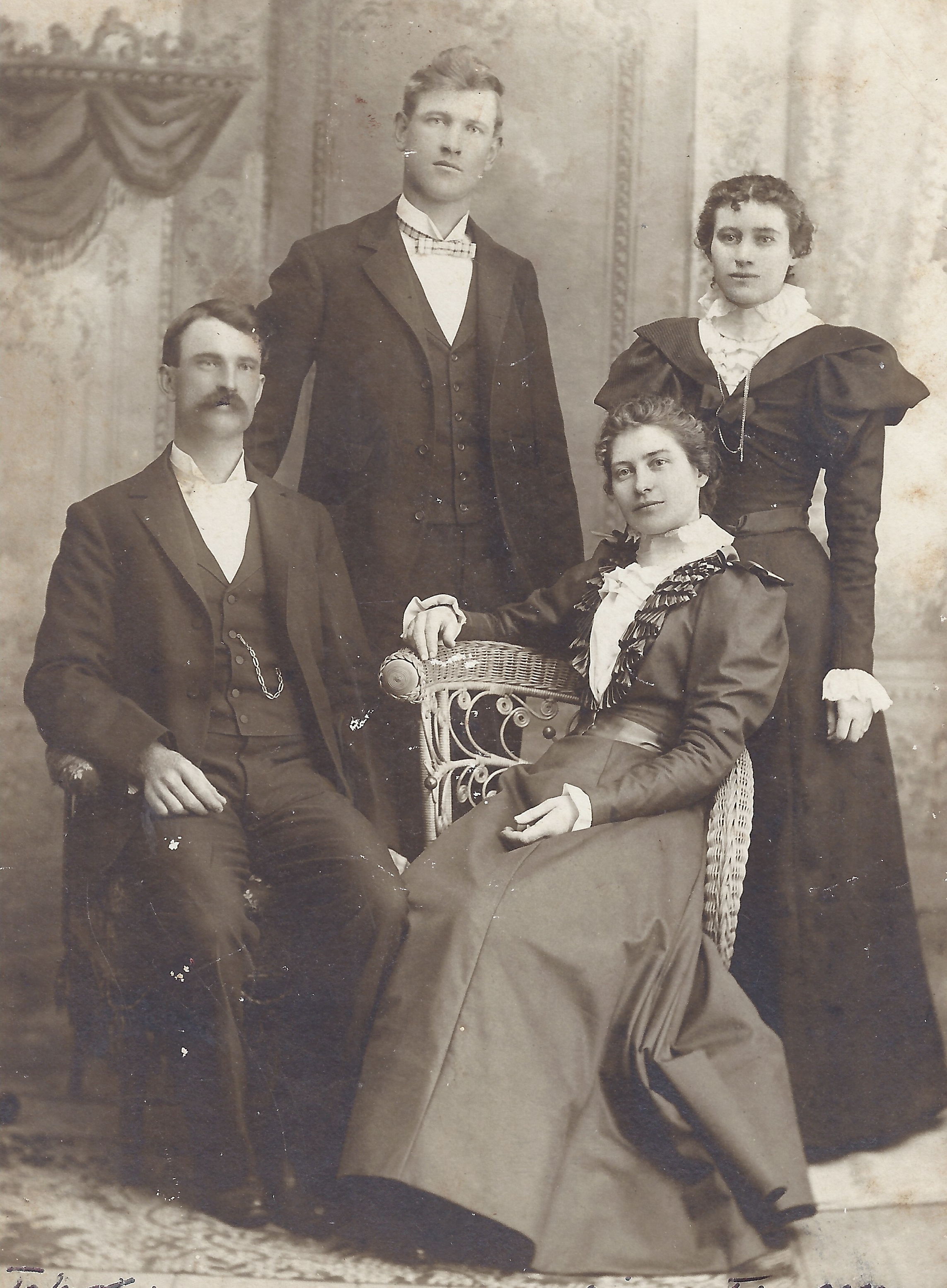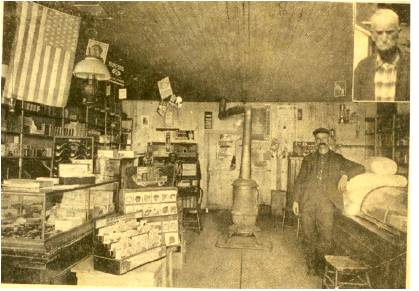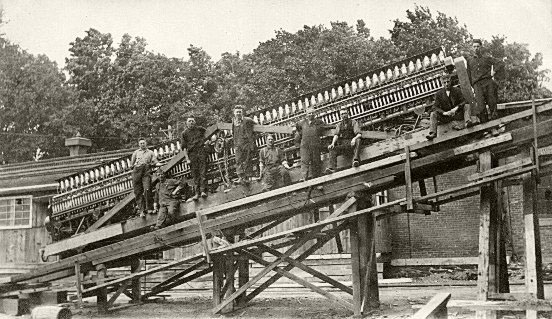  |
| Text goes here |
| |
 |
|
The Mill at Victory Mills,
Saratoga County, New York |
Installation of a loom at
Victory Manufacturing ca. 1930 |
|
The village
of Victory adjoins Schuylerville in the Town of Saratoga, New York.
Victory is located on Fish Creek, a tributary to the historic Hudson
River. In 2000, the village of Victory had a population of 665.Victory
was incorporated in 1849 and has historical significance in that the
Saratoga Battle Monument is within the Village and the General Phillip
Schuyler House and the Saratoga National Historical Park and National
Cemetery are nearby.
The village is the product of the industrial revolution. The number of
textile mills, which required abundant waterpower, grew rapidly during
the mid-1800s. Three wealthy Bostonians, Enoch Mudge, David Nevins, and
Jared Coffin learned of the potential of waterpower on Fish Creek in the
Town of Saratoga. They sent Benjamin Losee and Pickham Green to
investigate the potential and by 1846 the men had incorporated "The
Saratoga Victory Manufacturing Company" and built a three-story cotton
cloth manufacturing plant costing $425,000. The company flourished and
the number of employees living near the mill increased.
As a result the Village of Victory was incorporated under the general
laws on April 16, 1849, with William E. Miner, Patrick Cooney, George
McCreedy, Russell Carr and Benjamin Kelsey elected as trustees, William
E. Miner, president and James Cavanaugh elected to the position of
clerk.
In 1850, the cotton mill employed 160 men, 209 women, working at 12,500
spindles and 309 looms and produced over 1,800,000 yards of cotton
cloth. By 1877, the company employed 700 and had a capacity of 26,000
spindles with annual production of 819,988 pounds, or 4,487,190 of yards
of goods.
The development and expansion of Victory Mill coincided with the Potato
Famine of 1845-49 in Ireland. As a result, many Irish Catholic
immigrants found work at the mills and as early as 1847, there was
already a significant number of Irish families settled there. Early
settlers included John Lynch, Michael and John Kelley, Patrick, James,
and Lawrence Cooney, Wm. Carroll, Charles and Andrew Farley, Hugh and
John Quinn, Hugh T. White, Hugh Temple, John Cavanaugh, James and Thomas
Mulvihill, Patrick Lennon, Peter Garrihan, Patrick Airn, Patrick, James,
and Mathew Gearatty, Wm. Fitzsimmons, Hugh Geary and Peter Bannon.
Note that several of these men were likely natives of County Longford
including Bannon, Gearatty, Geary and Mulvilhil. While settlers in
Victory Mills came from various places in Ireland, it is noteworthy that
the largest number of headstone inscriptions in Victory Cemetery list
the County Longford parishes of Cashel and Shrule as the origin of the
settler. While we do not know William Carroll’s birthplace, his wife
Bridget Eustace who was a native of County Longford.
No regular or
permanent Catholic services were available to serve the spiritual needs
of this rapidly expanding Irish Catholic population. The only Catholic
churches within a circuit of thirty miles were at Lansingburg,
Whitehall, and Sandy Hill. Considerable commitment and self-sacrifice
and a strong love for their faith were required to attend services at
these distant places, oftentimes traveling on foot. Many would set out
together on foot the previous night in order to arrive in time for early
Sunday morning or holy day services.
The first Catholic Masses at Victory Mills were held at the houses of
different members, conducted at irregular intervals by visiting priests.
Sunday school was generally held at the house of William Carroll.
Catholic services were also held in the old Schuylerville Academy, and
in the schoolhouse east of the well-known "Mansion House." Ground was
broken for a church in 1845. This was on a lot nearly opposite the
Reformed Protestant church. A plain wooden structure was erected at an
expense of about $700, and consecrated in 1847 by Bishop McCloskey. This
work was executed under the labors of Father Daly who was succeeded in
the missionary work by Father Cull. The first resident priest was Rev.
Father Roach, who was succeeded in a short time by Rev. H.B. Finnegan
who was serving in 1878.
The church together with early records, was burned to the ground on
Sunday morning, June 22, 1871. Catholics parishioners then worshiped for
a time in the public hall at Victory Mills. Bishop Conroy of Albany,
laid the cornerstone of the new church, which was completed during 1873
and dedicated by Bishop McNierney on October 21st. The impressive
structure was considered second to none in the upper Hudson Valley. The
cost of $40,000 required heavy financial sacrifice for the mainly
working class parishioners. It occupied a commanding position,
convenient for the two villages and overlooking the surrounding country
for many miles.
The Catholic population included within the parish, which extended
somewhat beyond the borders of Schuylerville, by 1878 numbered twelve
hundred. It had a Sunday school of two hundred pupils, superintended by
Mr. John Carlin.
Back to Top
These pages © Ronald Eustice, 2007
|